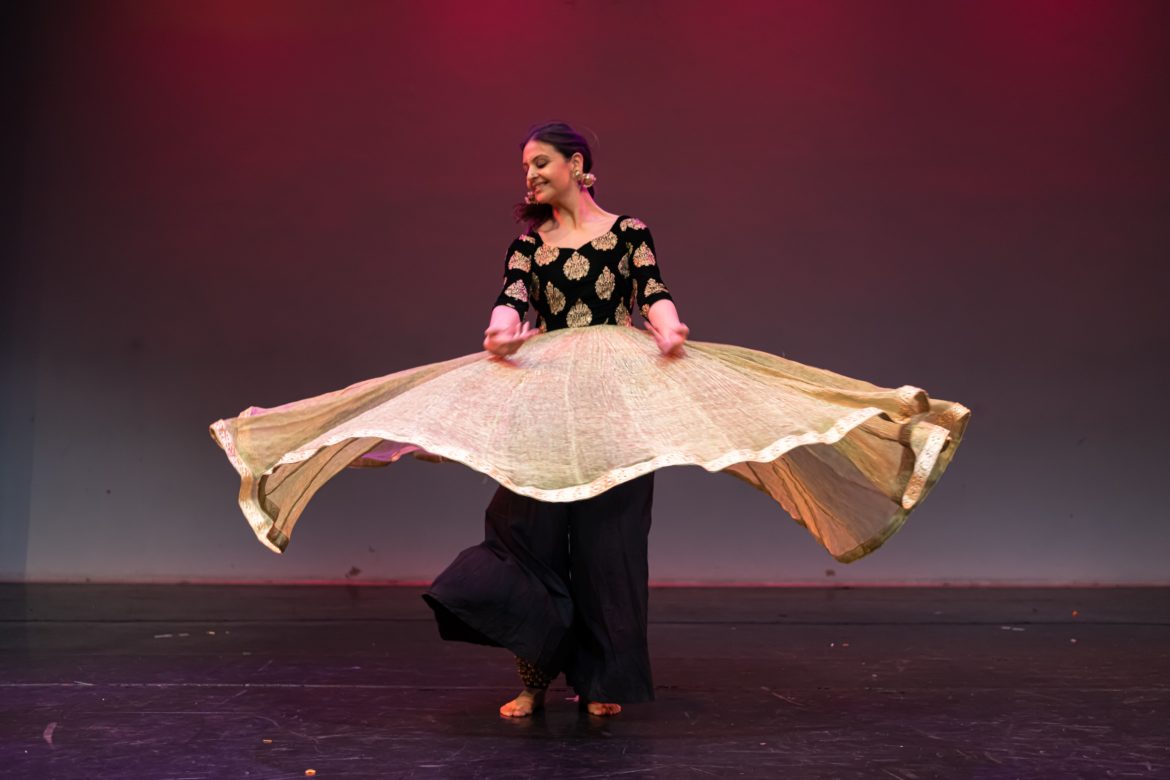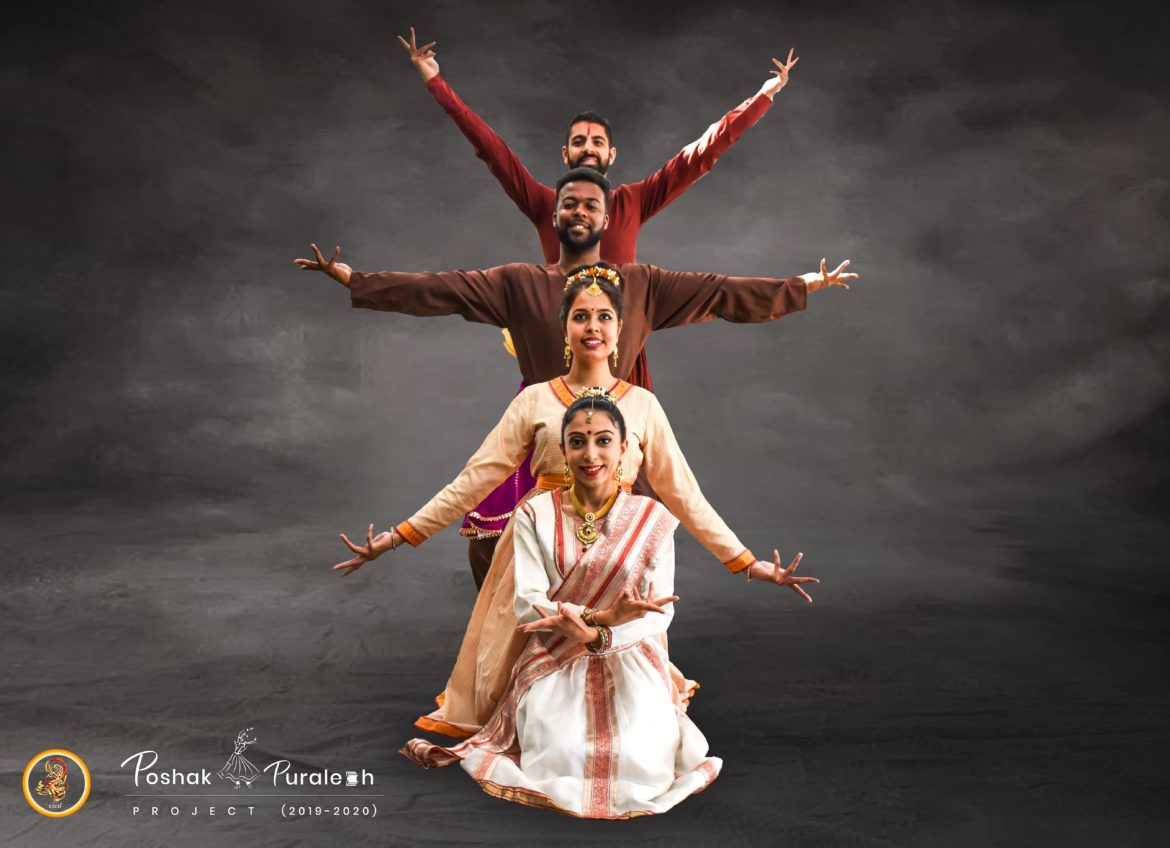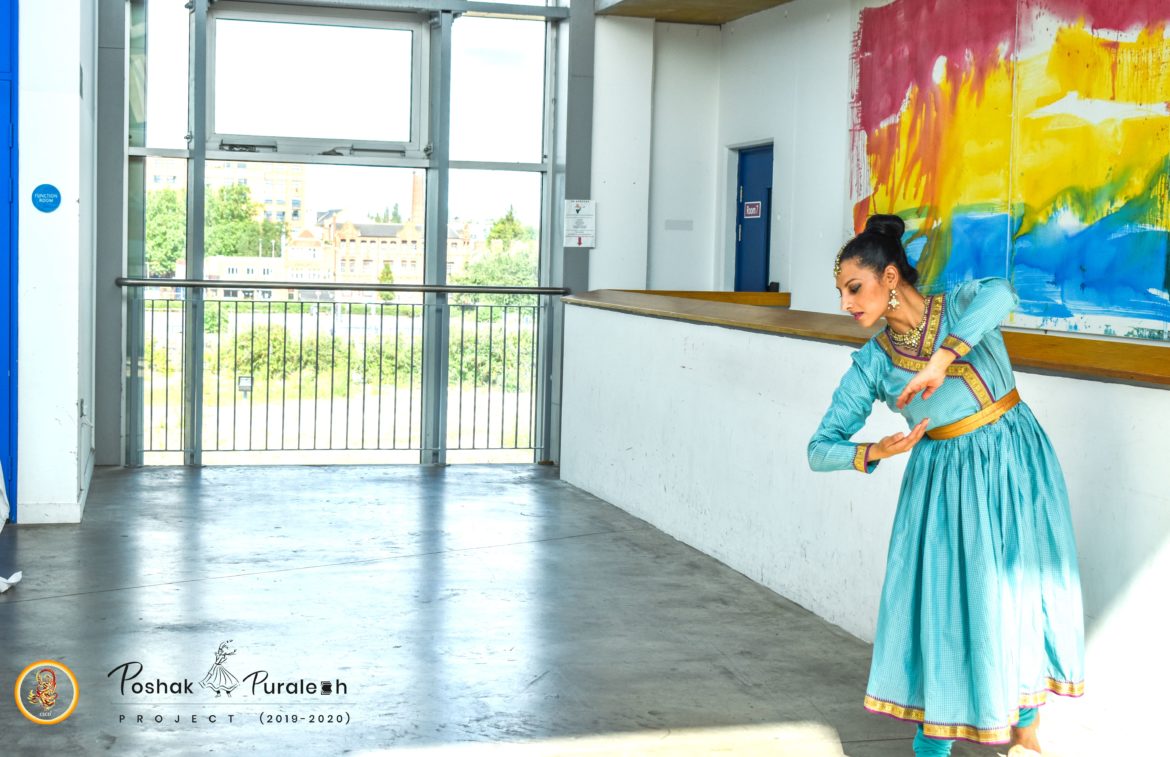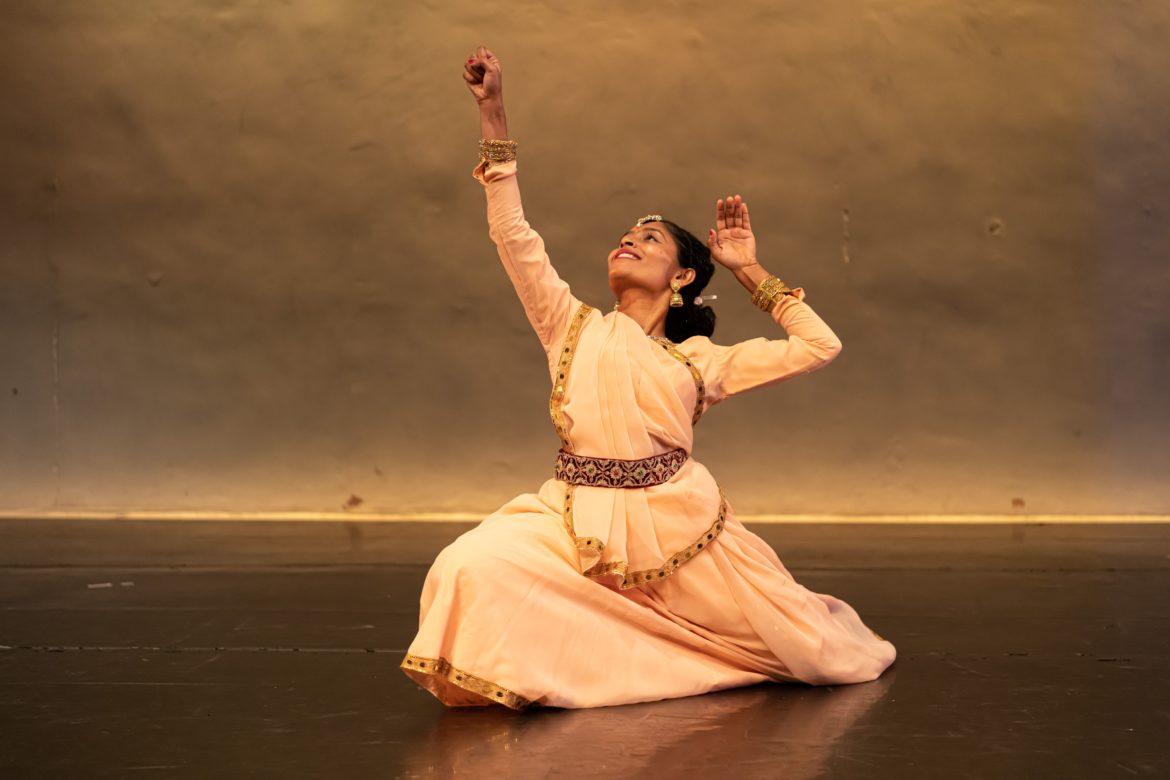Nilima Devi MBE is one of Britain’s most prominent and influential advocates of Kathak. She is a reputable choreographer, dancer and teacher that has continued and remains to this day visible on both the national and international dance radar.
Nilima is the founder as well as the Artistic Director of the Centre for Indian Classical Dance (CICD) based in the heart of Leicester. This is an institution that has for nearly forty years flourished under her direction, allowing her to impart her artistic vision and skills to both her students and the wider community. It is this vision, which in a nutshell Nilima acknowledges as her ability to “promote Indian culture through dance” and to educate the local populace in Indian dance forms with a particular focus on the classical style of Kathak, that continues to drive her impetus for dance forward. This is executed not only through the work of CICD but also through the efforts of her dance company: Nilima Devi Dance.
Many talented and passionate dance artists have walked through CICD’s doors and having once been students themselves have trained under the guidance of Nilima. Artists as Aakash Odedra, Subhash Viman Gorania, Kesha Raithatha and Meera Patel, to name a few, have all received some form of training by the Guru herself. And, it is now these artists that not only contribute to the growth and development of the British and international dance scene, but also use ingredients of Kathak (as well as other vocabularies) to develop their own experimental ideas and movement lexicons.

Nilima’s teaching of Kathak is based on a student-centred approach. This is to say that not only does she teach the North Indian dance style of Kathak in a traditional manner but she keeps this method systematic, clear, manageable and achievable for all of her students. At the same time, Nilima also endorses that her dance students bring something of themselves to the dance sessions and performances and thus allows them to infuse their creative practice with their own voices, narratives and experiences.
Nilima has also been involved in producing numerous innovative dance works. Her repertoire includes creations as “The Ugly Duckling” (1989), “Rainbow”, choreographed by Kumudini Lakhia (1993), “Kathak Tells a Story” (2001) and “Urjah” (2007). It is constructions as these that have been responsible for pushing the traditional and creative margins of dance forward whilst at the same time maintaining the essence of classical forms as Kathak.
But Nilima’s dance vocabulary does not just remain positioned within the rudiments of Kathak. In fact, she has also created compositional structures that are both positioned within folk and creative dance. She believes that for “Leicester’s Gujarati and Punjabi communities, folk dance plays a very important part in for example the celebration of festivals” as well as in the cultural make up of many of the local populace. She continues to add that both “folk and creative dance generally tend to appeal to the masses” whereas classical dance seems to draw attention to a smaller number of people. “Classical dance is also not everyone’s cup of tea, and it’s a dance form that takes many years to master whereas folk and creative dance do not take that long to learn and perform.” Therefore, both “folk and creative dance forms are an excellent way to develop some students’ confidence levels within a short period of time, and to provide them with a sense of joy, satisfaction and achievement.”

I recently spent some time with some of CICD’s gifted and dedicated dance students in order to examine what is involved in creating performative pieces for contemporary audiences to see. This is something that we very rarely see as spectators, but I was fortunate enough to get an insight into the world of CICD.
On my arrival, I was warmly greeted by Andreea Ghervan, CICD’s Project Officer as well as one of the organisation’s dancer’s. We managed to have a quick dialogue before I looked into what the students were up to. Andreea explained that in her opinion, dance is a very important aspect within her own and within the lives of CICD’s students. She recalls that “back in Italy, where I had been living for quite a few years, before coming to the UK, I used to travel many miles in order to take part in small Kathak workshops and I’ve always felt that my training in the past was never quite consistent and thus I couldn’t see many results.” But since being in the UK, Andreea has been fortunate enough to have found CICD and has now been receiving training in Kathak for nearly two years. As a result, she has “definitely been able to see many improvements” and developments.

After our chat, Andreea guided me into the studio space where I found a group of dancers who were in the midst of rehearsals for ‘’Tattva – The Source’’, an annual Indian classical and creative dance show that recently took place on February 29th at the Sue Townsend Theatre, Leicester. This particular group that I observed were “Rasya”, that is CICD’s very own Folk Dance Group, created by CICD students and volunteers that have a particular passion and interest in dance and culture.
The dancers welcomed me and I sat back and observed them at work. What I immediately noticed was the phenomenal energy and passion in the dancers’ execution of movements and also in terms of their motivation and commitment to their work. I also observed how the folk dance movements were visually striking, highly enigmatic and very infectious so much so that I too felt like joining in with the dance routine. Further, I discerned how the students were very talented in their ability to take control and ownership over this particular folk dance arrangement. They rehearsed and kept rehearsing, working on not only tightening the structure and timing of the piece but also on intricate details as specific movements and gestures. I sensed that this notion of ownership and control of creative constructions is clearly a practise that Nilima herself has and continues to nurture in her learners.

In addition to dance performances, festivals and shows, and teaching and choreographing, Nilima is also actively engaged in particular projects. One of her most recent ventures has been the highly successful ‘’Poshak Puralekh’’ project. In January 2019, CICD secured a National Lottery grant for this particular project. This innovative endeavour centres on the importance and incredible array of CICD’s archive of Indian classical and folk dance attire spanning from the birth of the organisation in 1981. And, since the launch of this assignment, the project has been allowing members of the public to learn about the roots, background and antiquity of these particular garments. This learning and exploration has taken place through a number of events that have been held locally in numerous settings and environments within the city of Leicester. These activities have comprised of not only an exhibition of CICD’s archive of costumes but have also encompassed, as Nilima mentions, the many narratives behind these outfits as in “how they were created and stitched for productions.” Further, this exhibition has also entailed a succession of dance presentations (Kathak, Folk and Bollywood), dance workshops, art/craft activities, storytelling and video presentations on Indian costumes.
For Nilima, classical dance is quite simply more than just an art form. In fact, it is a lifestyle; one that involves quite fixed conventions of past cultures and traditions which Nilima continues to transpose within the postmodern domain. It is through this transference that Nilima is then able to bring the movement vernaculars of the past and make them relevant for today’s and tomorrow’s students and spectators.


